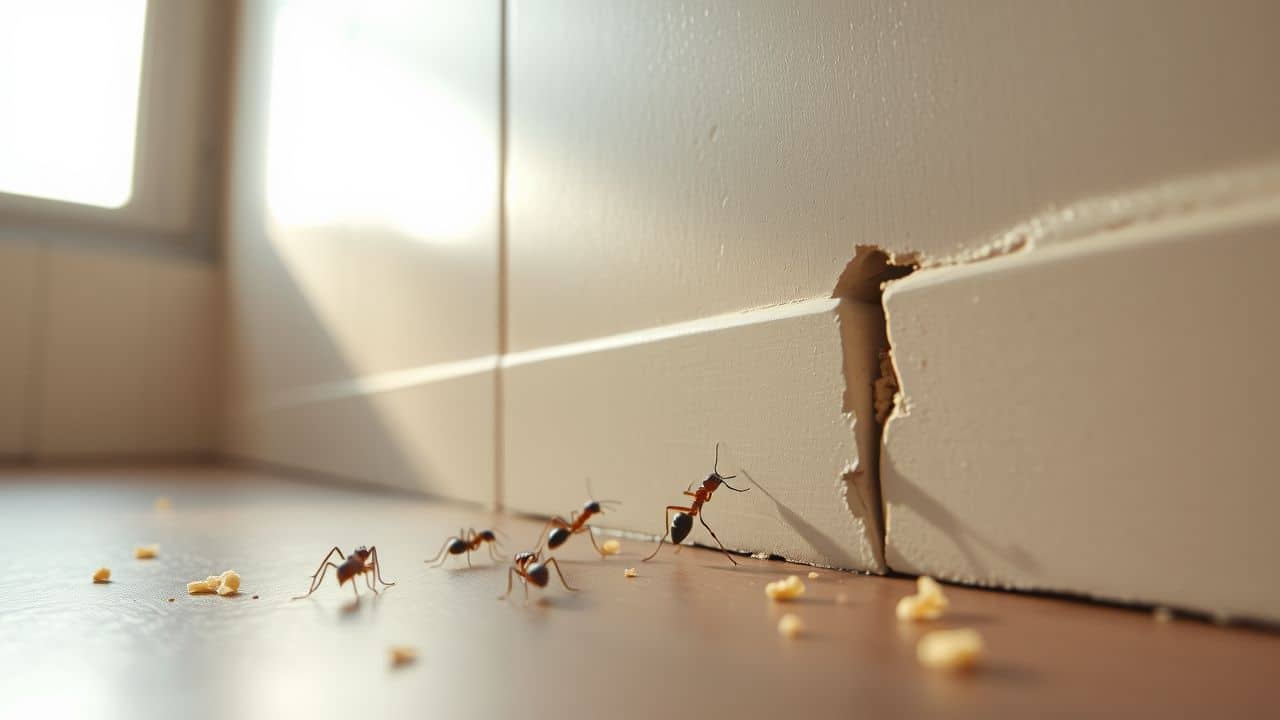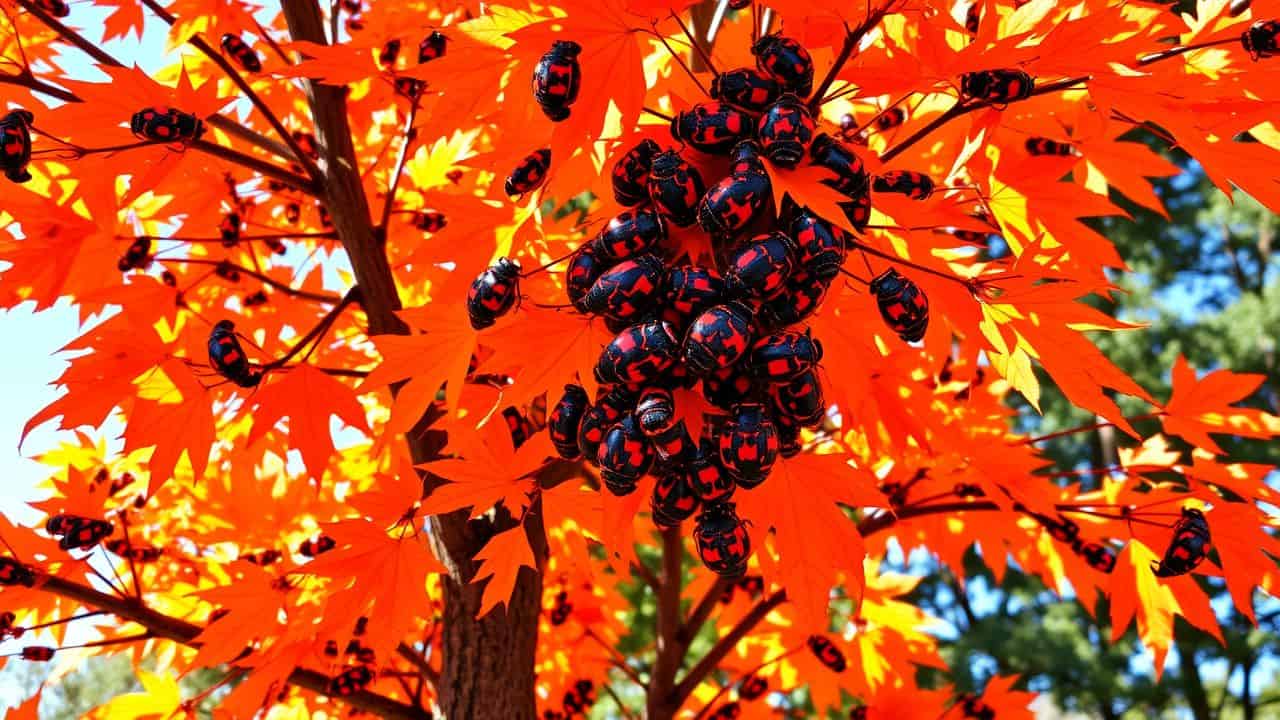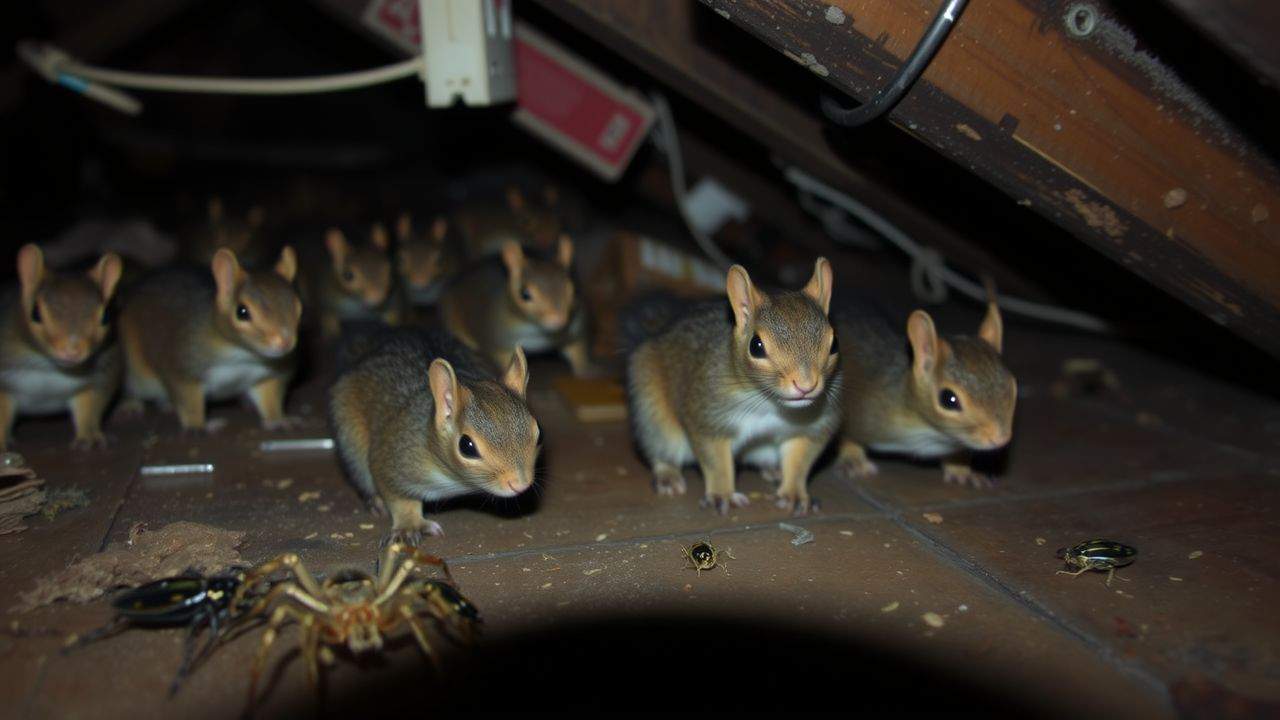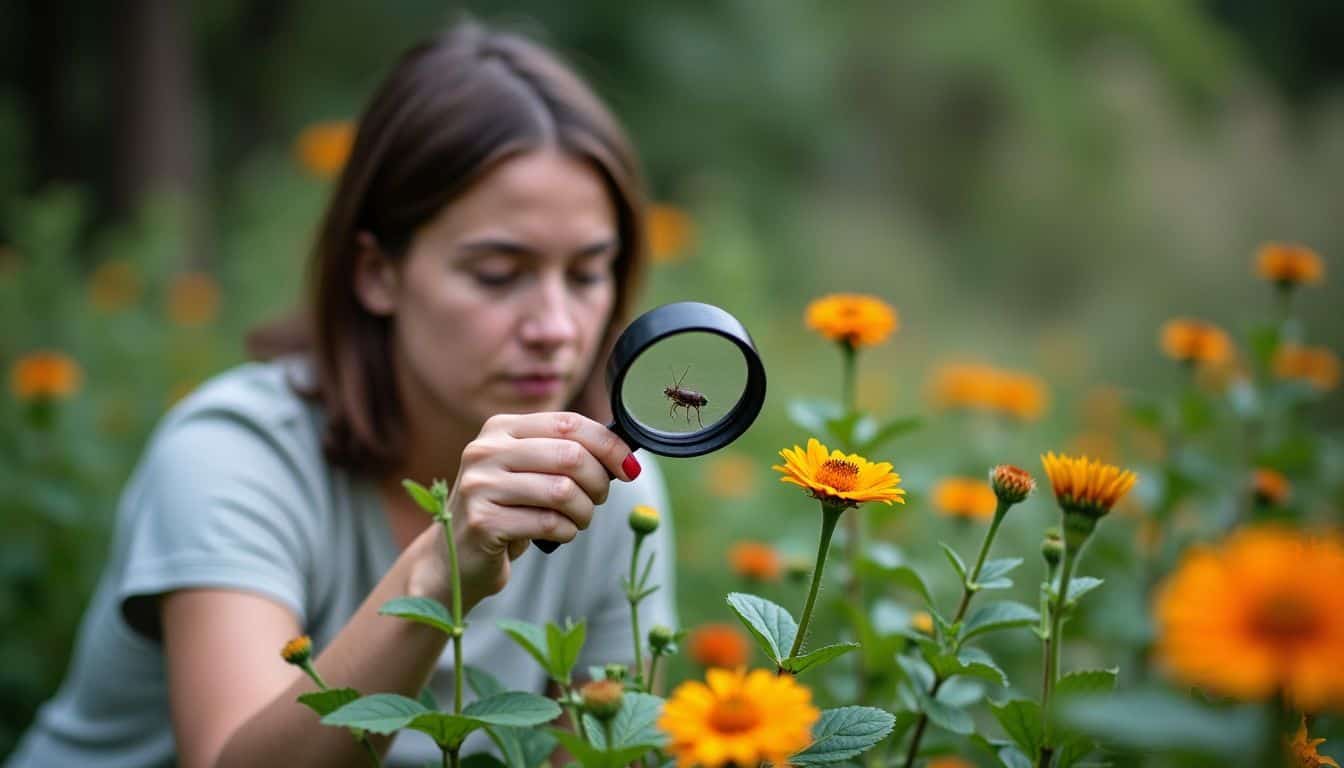Bugs in your home? You’re not alone. Seasonal pests are critters that show up at certain times of the year. These unwanted guests can be a real pain for homeowners in Atlanta and beyond.
This blog will help you spot and deal with pests all year round. Ready to kick those bugs to the curb?
Key Takeaways
Seasonal pests are critters that appear at specific times of year due to weather changes, food availability, and life cycles.
Each season brings different pest challenges: spring sees ants and termites, summer brings mosquitoes and flies, fall attracts stinkbugs and rodents, and winter drives pests indoors for warmth.
Effective pest management involves prevention (sealing entry points, proper food storage), monitoring (using traps), and season-specific treatments.
Integrated Pest Management (IPM) uses a mix of methods, including natural predators and habitat changes, to control pests in an eco-friendly way.
Regular cleaning, fixing leaks, and maintaining your yard year-round can greatly reduce pest problems in and around your home.
Table of Contents
Understanding Seasonal Pests

Seasonal pests are critters that show up at certain times of the year. They pop in and out based on weather changes, food sources, and their life cycles.
Identifying Characteristics and Behaviors

Pests have telltale signs that give them away. Each critter has its own quirks and habits. Ants leave trails and build mounds. Rodents gnaw on things and leave droppings. Termites make mud tubes and cause wood damage.
Knowing these clues helps spot trouble early. I once found tiny sawdust piles that tipped me off to termites in my shed. According to some Atlanta exterminators I spoke with, quick action is key to stop pests from taking over.
Pest behavior changes with the seasons, too. In spring, many bugs wake up and start breeding. Summer brings out the stinging insects like wasps and bees. Fall sees rodents looking for warm spots indoors.
Winter drives pests to seek shelter and food in our homes. Watching for these patterns helps predict and prevent pest problems. Regular checks around your house can catch issues before they get big.
Seasonal Pest Varieties by Time of Year

Pests change with the seasons, bringing new challenges each quarter. Want to know which critters might crash your party next? Keep reading!
Spring Focus: Common Pests

Spring brings new life and warmth, but it also ushers in unwanted guests. Let’s explore the common pests that wake up and become active during this season.
- Ants: These tiny invaders start their food hunt in March. They often sneak into homes through small cracks, looking for sweet or greasy treats.
- Mosquitoes: As temperatures rise, these blood-sucking pests emerge from winter dormancy. They breed in standing water, so check your yard for potential breeding spots.
- Termites: March kicks off termite swarming season, lasting until early May. These wood-eaters can cause major damage to homes if left unchecked.
- Flies: House flies become more active in spring. They’re not just annoying; they can spread germs on surfaces they land on.
- Stinging insects: Bees, wasps, hornets, and yellow jackets wake up from their winter nap. They start building nests and searching for food sources.
- Spiders: These eight-legged creatures become more visible as they hunt for insects. Most are harmless, but some can bite if disturbed.
- Bed bugs: While active year-round, bed bugs may increase activity as people travel more in spring. They hitch rides on luggage and clothing.
- Rodents: Mice and rats may move outdoors as food becomes more plentiful. But some might still nest in your home’s warm spots.
Summer Focus: Common Pests

Summer brings warm weather and unwanted guests. Let’s look at the pests that might crash your backyard barbecue.
- Mosquitoes: These tiny vampires love warm, humid nights. They breed in standing water, so empty birdbaths and fix leaky pipes. Bug spray and citronella candles can help keep them away.
- Ants: These little invaders march into homes looking for food and water. Keep counters clean and store food in airtight containers. A mix of water and vinegar can deter them from entering.
- Flies: House flies and fruit flies buzz around, landing on food and spreading germs. Use screens on windows and doors. Keep trash covered and fruit in the fridge to reduce their numbers.
- Stinging insects: Bees, wasps, and yellowjackets build nests and defend their turf. Avoid bright colors and sweet scents outdoors. If you spot a nest, call a pro for safe removal.
- Termites: These wood-eaters thrive in summer heat. Check for mud tubes on foundation walls or discarded wings near windows. Early detection can save your home from major damage.
- Ticks: These bloodsuckers hide in tall grass and leaf litter. Wear long sleeves and pants when hiking. Check yourself and pets after outdoor activities to prevent Lyme disease.
- Cockroaches: Heat and humidity draw these creepy crawlers indoors. Fix leaks, seal entry points, and keep your home clean and dry to make it less inviting for roaches.
- Bed bugs: Summer travel can bring these hitchhikers home. Inspect hotel rooms and luggage carefully. Wash clothes in hot water after trips to kill any stowaways.
Fall Focus: Common Pests

As summer fades, fall brings its own set of pest problems. Let’s explore the common critters that might crash your cozy autumn gatherings.
- Stinkbugs: These shield-shaped bugs invade homes in droves. They seek warm spots to hibernate and can leave a foul odor if crushed.
- Ladybugs: Don’t let their cute looks fool you. Asian lady beetles often swarm indoors in fall, leaving stains on walls and fabrics.
- Rodents: Mice and rats scurry inside for warmth and food. They can squeeze through tiny gaps, so check your home’s exterior for entry points.
- Fleas: These tiny jumpers hitch rides on pets. They thrive in warm, humid conditions and can quickly infest your home.
- Spiders: Eight-legged visitors become more visible as they hunt for mates. Most are harmless, but some can bite if disturbed.
- Cockroaches: These hardy pests love damp, dark places. They carry germs and can trigger allergies in some people.
- Boxelder bugs: Red and black insects that cluster on sunny walls. They don’t bite but can stain surfaces with their droppings.
- Paper wasps: These stinging insects build nests in sheltered areas. They become more aggressive as they prepare for winter.
- Elm leaf beetles: Small, greenish bugs that feed on elm trees. They often seek shelter indoors as temperatures drop.
- Bats: While not insects, bats sometimes roost in attics or chimneys. They can carry rabies, so it’s best to call a pro for removal.
Winter Focus: Common Pests

Winter brings its own set of pest problems. Let’s look at the critters that might crash your cozy home during the cold months.
- Mice and Rats: These furry invaders sneak in through tiny gaps, seeking warmth and food. They often show up in November and December, making nests in your walls or attic.
- German Cockroaches: These bugs love dark, damp spots in your home. They hide in kitchens and bathrooms, coming out at night to look for food crumbs.
- Oriental Cockroaches: Also called water bugs, they prefer cool, moist areas. You might spot them in basements or crawl spaces.
- Bed Bugs: These tiny bloodsuckers don’t care about seasons. They hitch rides on luggage or used furniture, setting up shop in your bedroom.
- Squirrels: Sometimes, these bushy-tailed creatures decide your attic is the perfect winter home. They can cause damage by chewing on wires and insulation.
- Spiders: While not as active, some spiders still hang around indoors during winter. They often hide in quiet corners or basements.
- Cluster Flies: These flies gather in large groups on sunny walls or attics. They don’t bite, but they can be a nuisance.
- Stink Bugs: These shield-shaped bugs look for warm spots to spend the winter. They often sneak in through cracks around windows and doors.
Effective Seasonal Pest Management Strategies

Keeping pests at bay takes smart planning. We’ll show you easy ways to stop bugs and critters before they become a problem.
Prevention and Monitoring Methods

Keeping pests at bay starts with smart prevention and keen monitoring. Let’s explore some effective methods to protect your home from unwanted guests:
- Seal entry points: Check for cracks in walls, gaps around pipes, and holes in screens. Fill these openings to stop pests from sneaking in.
- Store food properly: Use airtight containers for dry goods and keep fruits in the fridge. This habit cuts off easy food sources for pests.
- Clean regularly: Wipe counters, vacuum floors, and take out trash often. A tidy home is less inviting to bugs and rodents.
- Trim plants: Keep bushes and tree branches away from your house. This removes natural bridges pests use to access your home.
- Fix leaks: Repair dripping faucets and pipes promptly. Pests love moisture, so dry spaces are less appealing.
- Use pest-resistant plants: Plant lavender, marigolds, or mint around your yard. These natural deterrents help keep bugs at bay.
- Install door sweeps: Add these to exterior doors to block tiny gaps. They’re great for stopping mice and insects from crawling in.
- Monitor with traps: Place sticky traps in problem areas to catch pests early. This helps you spot issues before they grow.
- Check gutters: Clean them regularly to prevent water buildup. Clogged gutters can become breeding grounds for mosquitoes.
- Inspect packages: Look over boxes and bags before bringing them inside. Pests often hitch rides on deliveries.
Now that we’ve covered prevention, let’s move on to season-specific treatment options for those pesky intruders.
Season-Specific Treatment Options

Treating pests changes with the seasons. Here are some effective ways to tackle unwanted guests throughout the year:
- Spring Strategies:
- Seal cracks around your home to keep ants and termites out
- Get a pro to check for hidden pest problems
- Remove standing water to stop mosquitoes from breeding
- Use bug sprays when outdoors to ward off biting insects
- Summer Solutions:
- Keep doors shut to block flying pests
- Treat pets for fleas and ticks to prevent infestations
- Set up fly traps in outdoor eating areas
- Trim bushes and trees away from your house to reduce bug entry points
- Fall Fixes:
- Plug gaps in walls and foundations to keep rodents out
- Put out mouse traps in attics and basements
- Clean up fallen leaves and debris where pests hide
- Check firewood for insects before bringing it inside
- Winter Warfare:
- Fix leaky pipes to cut off water sources for roaches
- Seal entry points around utilities to block cold-seeking pests
- Store food in airtight containers to avoid attracting mice
- Keep birds away from vents and chimneys with proper covers
- Year-Round Tactics:
- Clean regularly to remove crumbs and spills that attract pests
- Store pet food in sealed containers
- Take out trash often and keep bins covered
- Maintain your yard to reduce hiding spots for unwanted critters
These season-specific treatments help keep your home pest-free all year. Let’s look at some overall pest management approaches that work in any season.
Integrated Pest Management (IPM) Approaches

Integrated Pest Management (IPM) offers a smart way to deal with pests. It uses a mix of methods to keep bugs and critters at bay. IPM doesn’t just rely on chemicals. Instead, it looks at the whole picture.
It uses nature’s own tricks, like helpful bugs that eat the bad ones. It also changes how we do things to make our homes less inviting to pests. This approach is kinder to our planet and often works better in the long run.
IPM isn’t about wiping out every single bug. It’s about finding a balance. We keep an eye on pest numbers and only act when needed. This saves money and cuts down on harmful chemicals.
IPM also teaches us about the pests we’re dealing with. Knowing their habits helps us outsmart them. It’s like playing chess with bugs! With IPM, we can keep our homes pest-free without going overboard.
People Also Ask
What are winter pests, and how can I keep them out?
Winter pests like mice and rats seek warmth in your home. They’re sneaky little critters! To keep them at bay, seal up cracks and holes. Don’t leave food out. If you spot signs of these unwanted guests, call a pro for rodent control fast.
How do spring pests differ from other seasonal invaders?
Spring pests wake up hungry! Ants and termites are common springtime troublemakers. They’re after food and shelter. Natural pest control methods work well for some. But for big problems, you might need professional pest control to nip it in the bud.
What summer pests should I watch out for?
Summer’s the busy season for bugs! Flies, mosquitoes, and Japanese beetles come out to play. These pests can ruin your backyard BBQ faster than you can say “pass the ketchup.” Regular yard care helps, but sometimes you need the big guns – professional extermination.
Are there specific pest species that only show up in fall?
Fall brings its own crew of creepy crawlies. Stink bugs and boxelder bugs love to crash your autumn parties. They’re not dangerous, but boy are they annoying! Pest removal in fall is all about sealing entry points. If they still sneak in, a pest control expert can show them the door.
References
https://www.guarantypestcontrol.com/seasonal-pest-control-what-you-need-to-know-for-each-season/
https://www.jcehrlich.com/blog/pest-control-tips/ultimate-guide-pest-seasonality-infographic (2014-07-21)
https://thepestrangers.com/seasonal-pests-which-are-most-common-in-what-months/ (2019-02-18)
https://pestech.com/seasonal-pests/
https://www.callnorthwest.com/2018/02/a-pest-for-every-season/
https://www.thebiggreenk.com/blog/the-4-seasons-of-pest-control/
https://catchapest.ie/seasonal-pest-control-preparing-your-home-for-each-season/
https://www.ampest.com/blog/2024/october/seasonal-pest-control-what-to-expect-each-season/ (2024-10-31)
https://pestdoc.com/seasonal-pest-control-tackle-common-pests-throughout-the-year/ (2023-11-13)
https://content.ces.ncsu.edu/extension-gardener-handbook/8-integrated-pest-management-ipm
https://www.epa.gov/safepestcontrol/integrated-pest-management-ipm-principles
